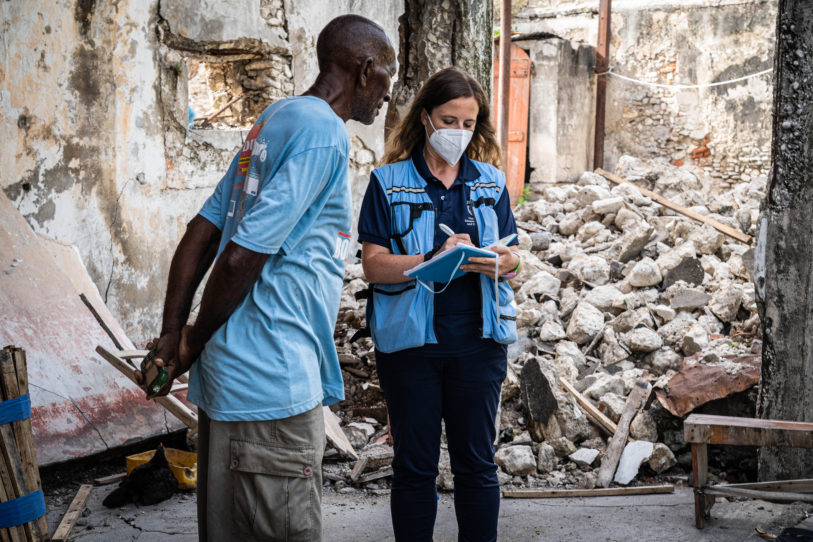Executive Summary
On 14 August 2021, a devastating 7.2-magnitude earthquake, followed by tropical storm Grace, struck Haiti and in particular in and around Jérémie and Les Cayes, on the Northern coast of the Southern peninsula of the country. As of 7 October, the death tool stood at more than 2,240 people, at least 800,000 people were injured and 38,777 displaced people have been identified. The earthquake damaged or destroyed over 130,000 buildings – including 90 health centers, around 70 per cent of all schools, houses, storage facilities – and other infrastructure like routes and bridges in south-western Haiti.
Key environmental concerns in the aftermath of the earthquake included: i) assessing the humanitarian footprint to ensure it does not overburden local natural resources (e.g. water supplies and sewage disposal); ii) monitoring and developing plans for short-term weather conditions to move disaster-displaced form possible flood and mudslide zones; iii) handling damaged stores and warehousing as high density pockets of pollutants, including hydrocarbons and pesticides, could create; iv) managing large quantities of debris from buildings and infrastructure; v) attention to and appropriate management of health care and other waste disposal; vi) ensuring good land ownership and tenure practices are implemented to avoid negative environmental impacts; vii) avoiding natural resource extraction from disaster survivors to fund relief and recovery efforts; viii) integrating awareness and attention to the environment into relief and recovery efforts, including through engagement from diaspora.
To support the government-led response to the multi-faceted disaster, a United Nations Disaster Assessment and Coordination (UNDAC) thirty-three-members team was deployed to Haiti from 15 August to 29 September, in coordination with OCHA and UNEP country offices. The team supported on coordination, rapid environmental assessments, humanitarian needs assessments, information management, humanitarian access, civil-military coordination.
The main objective of the overall mission was to support local and national authorities through field coordination; needs and environmental assessments, through rapid assessments and assessments and analysis (A&A), to ensure the environment is mainstreamed at all phases of the humanitarian response; and information management.
The overlapping crises (COVID, security, political and economic) and political situation created a compounding impact on the country and the response. Tensions on the ground, constraints and insecurity were a key challenge for humanitarian and environmental actors, especially when conveying assistance and relief supplies to hard-hit and hard-to-reach areas.
The mission delivered preliminary findings that ensured environment was anchored to the immediate emergency response phase and informed the development of a Post-Disaster Needs Assessment (PDNA) to transition into early recovery.
